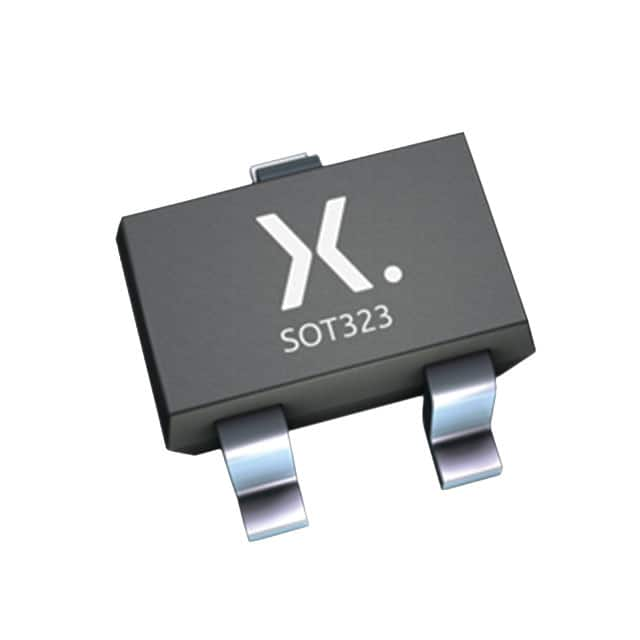Consulte las especificaciones para obtener detalles del producto.

1PS70SB10,115
Product Overview
Category:
1PS70SB10,115 belongs to the category of Schottky Barrier Diodes.
Use:
It is commonly used in electronic circuits for its rectification and switching capabilities.
Characteristics:
- Low forward voltage drop
- High switching speed
- Low reverse leakage current
Package:
The 1PS70SB10,115 is typically available in a surface mount SOD-323 package.
Essence:
The essence of this product lies in its ability to efficiently rectify and switch electronic signals with minimal power loss.
Packaging/Quantity:
It is usually packaged in reels or tubes, with quantities varying based on manufacturer specifications.
Specifications
- Forward Voltage: Typically around 0.3V
- Reverse Voltage: Up to 70V
- Forward Current: Up to 1A
- Operating Temperature: -65°C to +125°C
Detailed Pin Configuration
The 1PS70SB10,115 typically has two pins, with the cathode connected to the semiconductor material and the anode connected to the metal contact.
Functional Features
- Efficient rectification of AC signals
- Fast switching speed for high-frequency applications
- Low power dissipation
Advantages and Disadvantages
Advantages
- Low forward voltage drop reduces power loss
- High switching speed allows for rapid signal processing
- Compact size and surface mount package for space-constrained designs
Disadvantages
- Limited reverse voltage compared to other diode types
- Susceptible to thermal runaway at high currents
Working Principles
The 1PS70SB10,115 operates based on the Schottky barrier principle, where the metal-semiconductor junction enables fast switching and low forward voltage drop.
Detailed Application Field Plans
This diode is widely used in: - Switching power supplies - Voltage clamping circuits - RF detectors and mixers - Signal demodulation circuits
Detailed and Complete Alternative Models
Some alternative models to 1PS70SB10,115 include: - 1N5817 - BAT54S - SS14
In conclusion, the 1PS70SB10,115 Schottky Barrier Diode offers efficient rectification and fast switching capabilities, making it suitable for various electronic applications.
[Word count: 324]
Enumere 10 preguntas y respuestas comunes relacionadas con la aplicación de 1PS70SB10,115 en soluciones técnicas
What is 1PS70SB10,115?
- 1PS70SB10,115 is a Schottky barrier diode designed for high-speed switching applications.
What are the key features of 1PS70SB10,115?
- The key features include low forward voltage drop, fast switching speed, and high reliability.
What are the typical applications of 1PS70SB10,115?
- Typical applications include power supply rectification, freewheeling diodes, and reverse polarity protection.
What is the maximum forward voltage of 1PS70SB10,115?
- The maximum forward voltage is typically around 0.5V at a forward current of 1A.
What is the reverse recovery time of 1PS70SB10,115?
- The reverse recovery time is typically in the range of nanoseconds, making it suitable for high-speed switching.
What is the maximum operating temperature of 1PS70SB10,115?
- The maximum operating temperature is typically around 150°C, ensuring reliable performance in various environments.
Does 1PS70SB10,115 require a heatsink for operation?
- It depends on the application and the power dissipation, but for most typical applications, a heatsink may not be necessary.
Can 1PS70SB10,115 be used in parallel to handle higher currents?
- Yes, 1PS70SB10,115 can be used in parallel to increase the current-handling capability in certain applications.
What are the packaging options available for 1PS70SB10,115?
- The diode is typically available in surface mount packages such as SOD-123 or SOD-323.
Are there any specific layout considerations when using 1PS70SB10,115 in a circuit?
- It's important to minimize the length of the traces connecting the diode to other components to reduce parasitic inductance and ensure optimal performance.

